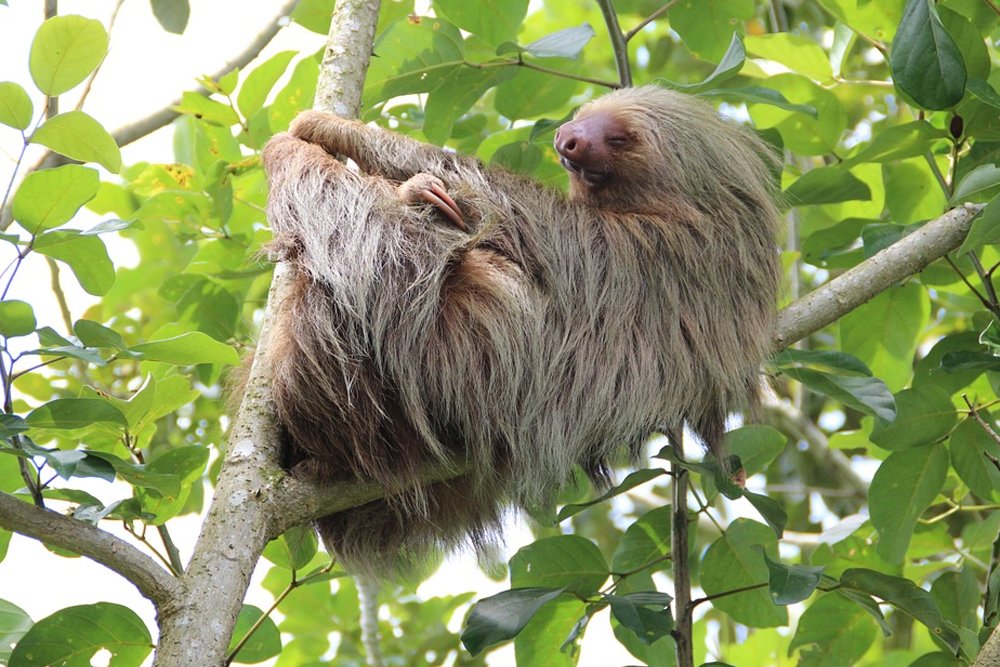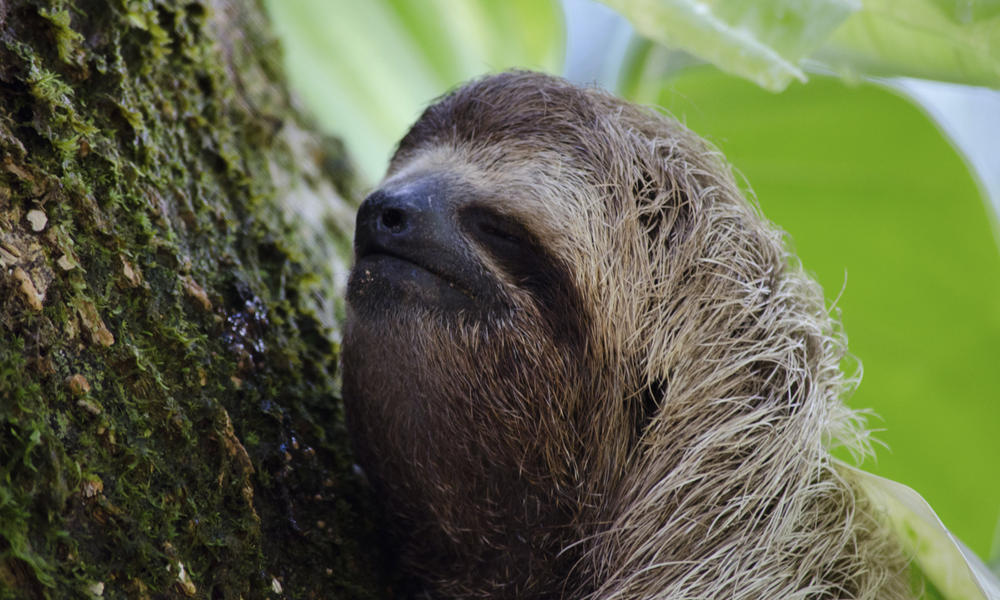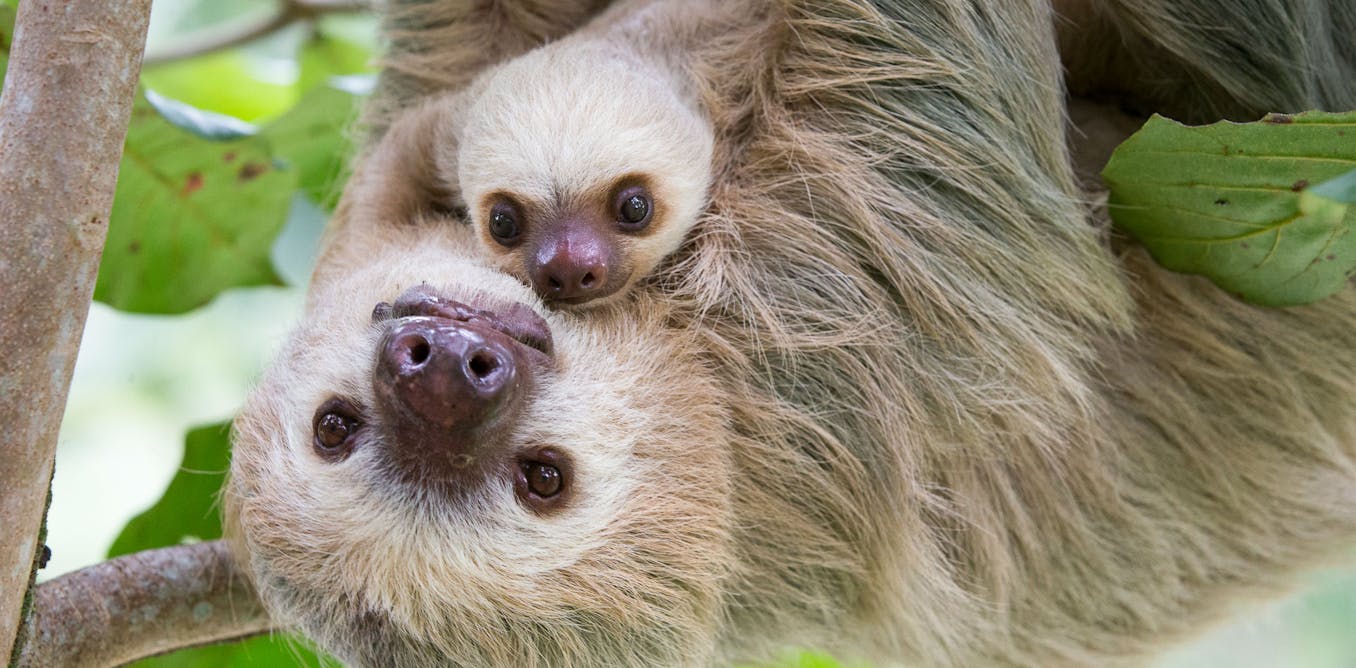How Sloths Slow
- Photos: Slow-Moving and Ridiculously Cute Sloths By holding it in, sloths can store up to a third of their body weight in urine and feces.
- Sloths are the slowest mammals on land. Some South American sloths move slow enough for algae to grow in their fur. Although their speed depends on the circumstances and environment, they generally move at the speed of 1.2 miles per hour (1.9 kilometers per hour).
Sloths’ reputation as lazy, slow and stupid creatures owes much to French naturalist Georges Buffon, who described the tree-dwelling mammal as the “lowest form of existence” back in 1749. Buffon’s assessment has endured for centuries, but much of the criticism directed at sloths is unwarranted. As zoologist Lucy Cooke explains for The Day, the sloth’s sluggish lifestyle is a deliberate survival strategy that has enabled it to maintain a place on Earth for nearly 64 million years.

How Slow Sloths Are
Natural camouflage. Sloths possess a symbiotic relationship with the algae that grows on. Besides, feeding on leaves is another reason why sloths are so slow. Leaves provide few nutrients and energy, so the sloth cannot spend too much energy with such a limited diet. Sloth Metabolism and Feeding As sloths base their diet on leaves, they have evolved to function on a. Sloths are medium-sized mammals that live in the Central and South American rainforests. The sloth got its name from its slow movement, it is not lazy, just slow-moving. The sloth is the slowest mammal on Earth. In total, there are six species of sloth. Sloths belong to the families ‘Megalonychidae’ and ‘Bradypodidae’, part of the.
But sloths don’t just live life in slow motion: They might even be able to put their metabolism on pause, a new study published in PeerJ suggests. The slowpoke is now the only mammal known to be capable of temporarily shutting down its metabolism without entering into a state of lethargy or hibernation, a behavior that’s more typical of reptiles and birds, Jason Bittel reports for National Geographic.


According to a blog post published on the Costa Rica-based Sloth Conservation Foundation’s website, this scenario plays out when sloths experience very hot or cold temperatures. Most mammals facing similarly extreme conditions, or those that fall outside of a comfortable temperature range known as the thermoneutral zone, respond in a manner completely anathema to the sloth’s slow-down.
Within the thermoneutral zone, most mammals can control their body temperature without using up too much energy, but outside of it, they must expend vast amounts of energy. As zoologist Rebecca Cliffe, the study’s lead author and co-founder of the Sloth Conservation Foundation, tells Bittel, animals’ physical responses to hot and cold, such as shivering, sweating and panting, help them regulate their internal temperature but take a heavy toll on energy levels.
Reptiles and birds, on the other hand, don’t have a thermoneutral zone. When it’s cold, they expend minimal amounts of energy, and when it’s hot, they use lots of energy. As the foundation notes, this occurs because the animals are unable to control their body temperatures, and metabolic processes tend to work faster at hotter temperatures regardless of whether they’re operating in mammals, cold-blooded critters or avian fliers.

Scientists have long known that sloths defy easy categorization. Sloths are often likened to reptiles, Cliffe writes for The Conversation, because they both adopt a slow pace in order to conserve energy. It would make sense, therefore, for sloths experiencing high temperatures to exhibit a higher metabolic rate and sloths experiencing low temperatures to use up very little energy.
To test this hypothesis, Cliffe and her team placed eight three-fingered sloths into individual, temperature-controlled chambers and monitored their oxygen levels as the temperature rose and fell. As the chambers got hotter, the sloths used up more oxygen (and energy), but once the thermostat hit 86 degrees Fahrenheit, energy levels started sliding back down.
The results were surprising, to say the least, as the foundation’s blog post explains:

What's Slower Sloth Or Snail
This reduction in metabolic rate at high temperatures is the exact opposite of what typically happens in all other animals.
Instead of using up vast amounts of energy when trying to cool down, the sloths in the study actively depressed, or slowed down, their metabolism—and they did it without entering a state of torpor, aestivation or hibernation (essentially all synonyms for periods of intentional inactivity).
When other large mammals face extremely hot or cold temperatures, they can enter a similar hypometabolic, or lowered metabolism, state, but in doing so, they tend to become lethargic. As Roberto Nespolo, an evolutionary biologist at the Austral University of Chile, tells National Geographic’s Bittel, such states find the animals’ body temperatures dropping dramatically and rendering them unresponsive. The sloths, however, maintained their body temperatures while remaining fully awake.
Nespolo says the team’s new findings remind him of birds’ energy patterns. King penguins, for example, appear to conduct deep sea hunts without warming their stomachs, potentially saving energy and enabling them to stay underwater for longer periods of time.
The explanation behind this unexpected strategy is likely related to the “metabolic knife edge” Cliffe says sloths navigate on a daily basis. All animals must balance the energy they consume with energy taken in to ensure their survival; for sloths, this is a highly tenuous task. Sloths can only eat a specific group of leaves, and unlike most animals’ nutrient-rich food sources, these leaves are both lacking in nutrition and difficult to digest. As a result, sloths have to keep a careful eye on the amount of energy they use each day.
How Are Sloths So Slow
Ultimately, sloths facing scorching temperatures can probably do little beyond moving into the shade and lying still rather than wasting energy on panting, sweating or similar cool-down efforts.
How Slow Sloths Move
“You depress your metabolism and you just sit still and wait for the heat to pass,” Cliffe tells Bittel. “So it does make sense, but it was totally unexpected.”